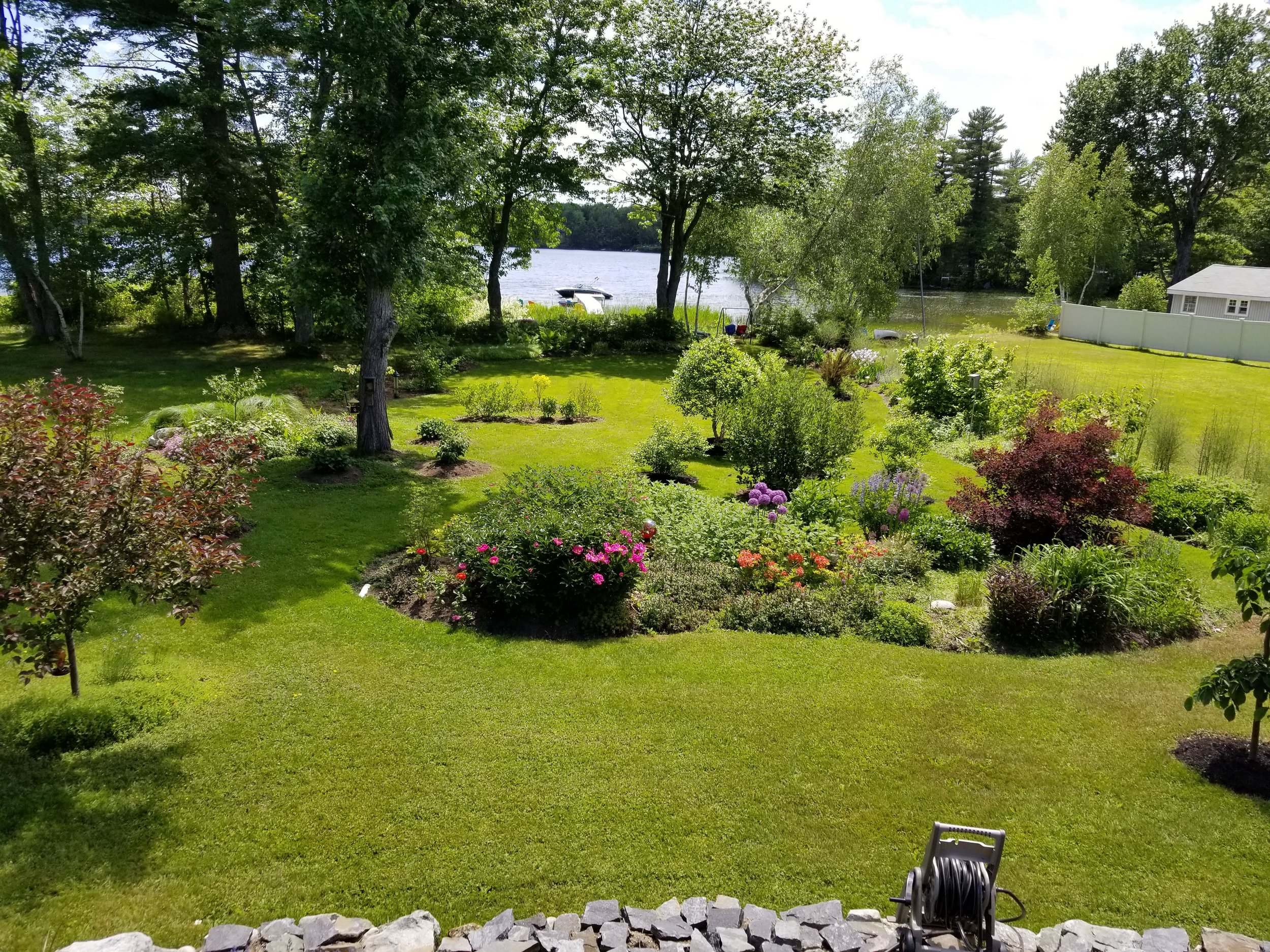
YardScape
What is YardScaping?
YardScaping helps you build healthy soil to grow all kinds of landscapes from lawns to rain gardens in your yard without relying on pesticides and fertilizers. It also helps:
Create a low-maintenance yard that saves you money, time, and effort.
Make your yard more functional for how YOU want to use it.
Be more resistant to pests and prepared for drought.
Attract more birds, butterflies, and other wildlife.
Prevent erosion and drainage issues.
District Parking Lot Demonstration Sites
The District has received grant funds to implement YardScaping demonstration sites right here in our parking lot. Demonstration sites are aimed at providing education to residents, businesses, municipalities, and partners by illustrating conservation techniques that can easily be utilized in one’s own yard.
Each technique mimics nature by creating habitats, filtering pollutants, and preventing erosion, while building healthy soils for native plants. Demonstration sites will be constructed using low maintenance conservation practices and without any pesticides or invasive plants.
Attend one (or all!) of our workshops. Each workshop focuses on a different YardScaping technique and is designed to allow attendees to get their hands dirty in one of our eight demonstration sites.
-
A bioswale is a shallow channel filled in with tall and dense vegetative cover, primarily consisting of grasses.
They are often located adjacent to impervious surfaces like roadways and parking lots.
Bioswales convey stormwater runoff while slowing velocity, filtering pollutants, and encouraging groundwater infiltration.
-
Cover cropping is the maintenance of a continuous cover of plants. They can be planted to improve soil structure and fertility after they are incorporated back into the soil.
This practice increases soil organic matter and improves soil fertility. It also raises soil moisture holding capacity, helps prevent soil erosion, limits nutrient runoff, reduces soil compaction, and helps suppress some pests and weeds.
-
A groundcover is a low-growing plant with dense foliage, typically spreading wider than they are tall.
They provide topsoil with a layer of protection, preventing erosion, stabilizing soil, and providing shade. This helps soil retain moisture.
Groundcovers also serve as natural weed control, are low maintenance, and add a functional, yet aesthetic appeal to any garden.
-
A pollinator garden is planted with native flowering perennials that support pollinators and wildlife by mimicking their natural habitat.
To attract as many pollinators as possible, plant various types of flowers that flourish in all seasons and flowers of all shapes, sizes, and colors.
This garden type adds habitat features such as shelter and water that are vital to various species and is beneficial for stormwater treatment.
-
A rain garden is a landscaped area with a shallow depression that is filled with moisture-tolerant plants to collect, treat, and infiltrate stormwater.
Conveyance structures, such as rain guardians and stone-lined channels divert water from impervious surfaces into the garden.
They help to prevent flooding and erosion, intercept pollutants, and provide habitat and pollination opportunities for various species.
-
A raised bed garden has soil that is raised above ground level, typically in a box-like frame made of a food-safe material.
Raised bed gardens allow for better soil quality depending on vegetation type, as a custom soil mix can be created for each bed.
They also have improved drainage, reduced weed growth, and the potential for a longer growing season due to faster soil warming.
-
A salt-tolerant garden is comprised of carefully chosen plants that can withstand frequent or constant soil saturation and salt spray.
This garden type is beneficial because it allows plants to be grown in coastal regions, beside salted roadways, or in urban areas with limited green space.
Many salt tolerant plants are drought-resistant, tolerant of poor soil quality, and assist in shoreline stabilization.
-
A vertical garden is comprised of plants that naturally grow very tall, or that are supported by a vertical structure, such as a trellis or a lattice.
This is an ideal garden type for those focused on space-saving options and/or looking to transform unused vertical space.
Vertical gardens can also help insulate buildings, reduce noise pollution, provide passive cooling, and increase food production.
Do you hire a landscaping company?
Ask them to use YardScaping practices like:
Apply fertilizer in the early fall, based on soil test results, not on a fixed schedule. Applying unneeded fertilizer is a waste of time and money and pollutes our water.
Build topsoil by aerating and topdressing soil with compost. Compost will add organic matter, hold more water, and increase topsoil depth for healthier roots.
Use YardScaping practices to reduce pests instead of using pesticides.
Use native plants that provide food and shelter to pollinators and other wildlife.
Partner Stores
Look for the YardScaping duck when visiting these stores to find products and plants that align with YardScaping practices.
-
Dupuis Hardware
Home Depot
-
Skillins Greenhouses
-
Ace Hardware
Allen, Sterling & Lothrop
Skillins Greenhouses
-
Ace Hardware
O’Donal’s Nursery
-
Eldredge Lumber & Hardware
Maine Hardware
-
Moody’s Nursery & Garden Center
-
Dunstan Ace Hardware
Flaherty’s Family Farm
Highland Farm
Oak Hill Ace Hardware
-
Broadway Gardens
Drillen Ace Hardware
Shopper’s True Value
-
Broadway Gardens
-
Aubuchon Hardware
Blue Seal Feeds & Needs
Home Depot
Roosevelt Trail Landscape & Garden
-
Ace Coastal Hardware
Estabrooks





